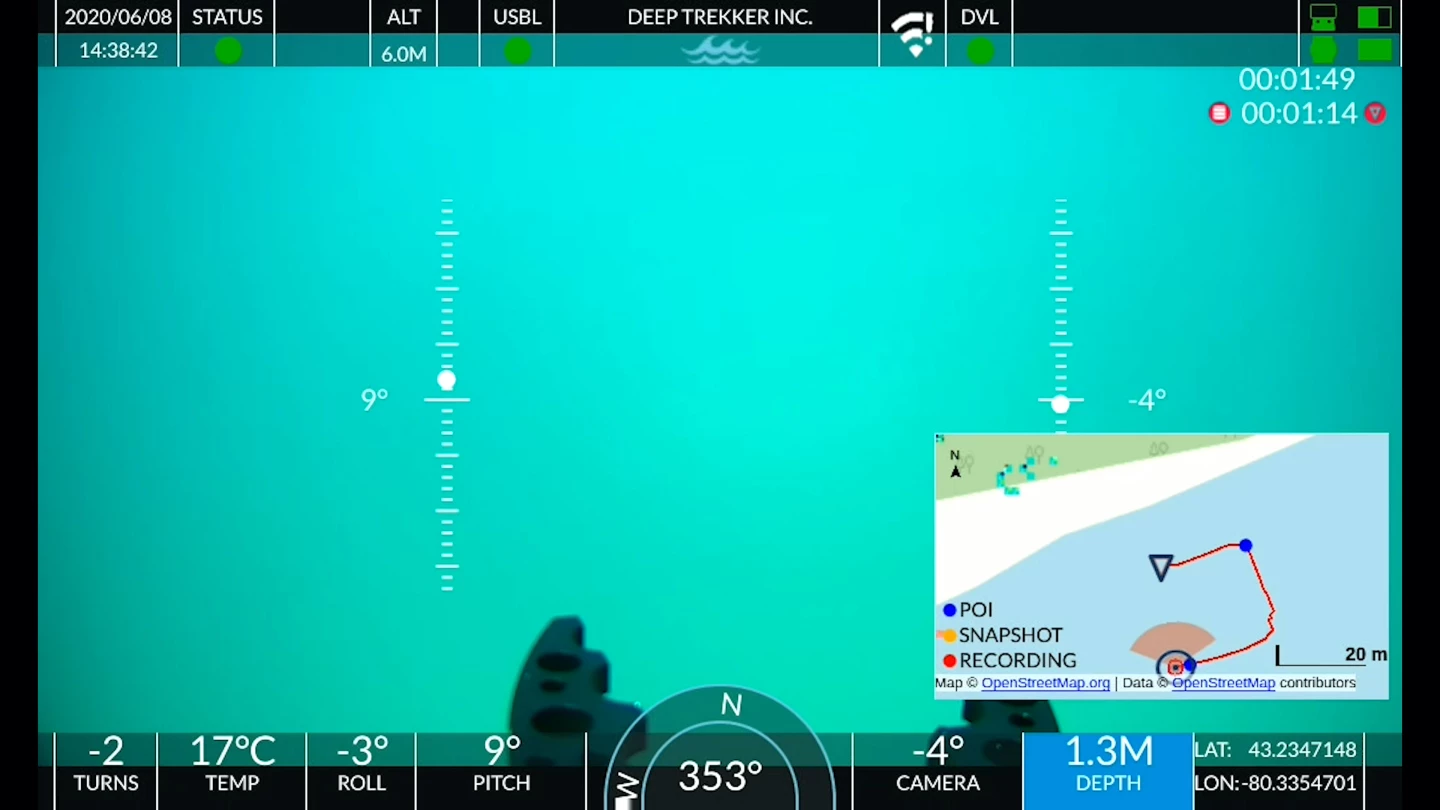GPS doesn't work underwater, which means that keeping track of a submersible's whereabouts can be difficult. A new ROV (remotely operated vehicle) still manages to show up on Google Maps, however – plus it has a cool rotating head.
Manufactured by Canadian company Deep Trekker, the Revolution NAV is in many ways like a lot of other ROVs.
It's linked to a topside operator via a communications tether, has six thrusters (two vertical, four horizontal), can descend down to 305 meters (1,000 ft), shoots 4K/30fps video aided by LED spotlights, has a robotic grasping arm, and can reportedly run for up to eight hours on one 3-hour charge of its swappable lithium-ion battery pack.
When the Revolution NAV is launched from the shore or a boat, the operator drops a soda can-sized object known as a transducer into the water. It floats at the surface beside them, transmitting acoustic pulses into the sea or lake. Each time a transponder mounted on top of the ROV receives/detects one of those pulses, it responds by sending out one of its own.
When the floating transducer detects that responding pulse, it's able to determine how far away the ROV is from it (based on the amount of time that has elapsed since it sent out its pulse), and in which direction. Because a GPS module in the operator's handheld control unit allows that device's coordinates to already be known, an integrated microprocessor is thus able to also calculate the ROV's coordinates.

This technology is not unique to Deep Trekker. However, the company does go the extra step of using the data to display the Revolution NAV's current location on a Google Maps inset on the controller screen. The route that the ROV has followed is also displayed, and can be saved for future reference – if the operator spots something of interest on the live feed from the ROV's camera, for instance, they can mark its location on the map for subsequent investigation.
And yes, the vehicle also has a spherical head that can be tilted 260 degrees up and down relative to the body. This means that while the ROV is holding its position within the water column, its camera, lights and arm (or other optional add-ons) can be moved to get the optimal angle for the task at hand.
Should you want to buy one for yourself, be aware that the Revolution NAV is most definitely aimed at professional use – it's priced at US$56,999. You can see it in action, in the following video.
A less expensive non-NAV version, without the GPS tracking, goes for $29,999.
Source: Deep Trekker








